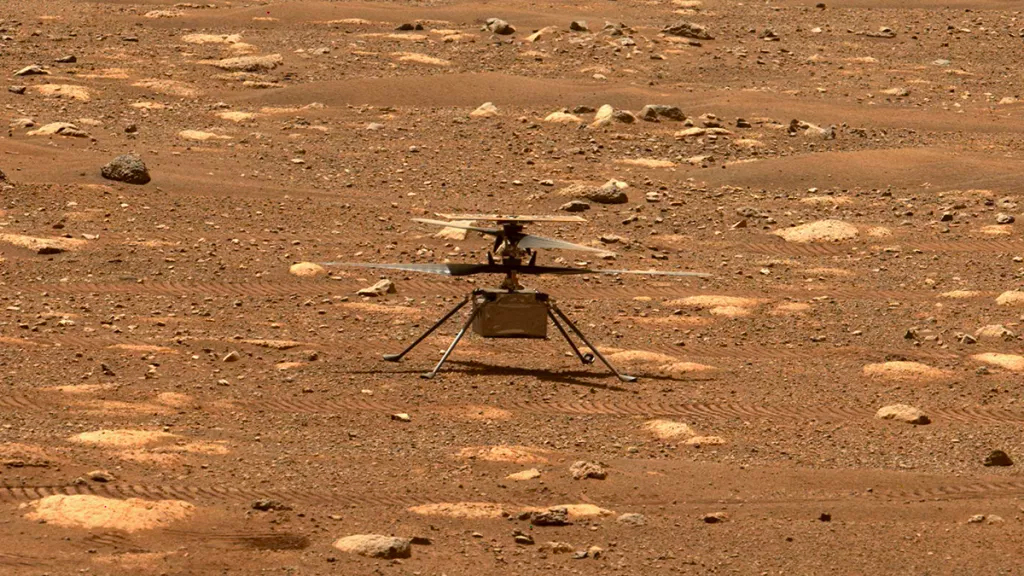NASA delays Mars helicopter Ingenuity's 1st flight to April 14
The little chopper was grounded after a test ended early.

NASA has delayed the first flight of its Mars helicopter Ingenuity after the vehicle's last test ended earlier than planned.
Ingenuity will now remain planted firmly on the Red Planet's surface until at least Wednesday (April 14), according to a statement from the agency. The delay comes in response to an anomaly during a test that was meant to see the helicopters blades reach flight-like speeds of 2,400 revolutions per minute.
"During a high-speed spin test of the rotors on Friday, the command sequence controlling the test ended early due to a 'watchdog' timer expiration," NASA officials wrote in a statement Saturday (April 10). "This occurred as it was trying to transition the flight computer from 'Pre-Flight' to 'Flight' mode. The helicopter is safe and healthy and communicated its full telemetry set to Earth."
Related: Watch NASA's Mars helicopter Ingenuity test its blades! (video)
Join our forums here to discuss the Perseverance rover on Mars. What do you hope finds?
The statement adds that helicopter engineers are still reviewing data from the little chopper to understand precisely what occurred, but that the team hopes to reschedule the failed test.
Ingenuity arrived on the surface of Mars on Feb. 18, ferried to the Red Planet as a technology demonstration project by NASA's car-sized Perseverance rover. After the rover got situated at its landing site in Jezero Crater, it set about looking for an airfield for the helicopter's historic flight. After arriving there, the rover set about the careful process of unfolding and deploying the 4-lb. (1.8 kilograms) helicopter.

Ingenuity then had to notch several milestones, including surviving the cold Martian night on its own, powered by energy its solar panels harvested. Engineers also unlocked the helicopter's blades and tested them at a low speed, just 50 revolutions per minute.
Get the world’s most fascinating discoveries delivered straight to your inbox.
On Friday (April 9), the helicopter attempted to test its blades at full speed, the final precursor to taking flight, but that was the procedure that the watchdog timer cut short.
"The watchdog timer oversees the command sequence and alerts the system to any potential issues," NASA officials wrote in the statement. "It helps the system stay safe by not proceeding if an issue is observed and worked as planned."
Email Meghan Bartels at mbartels@space.com or follow her on Twitter @meghanbartels. Follow us on Twitter @Spacedotcom and on Facebook.
Meghan is a senior writer at Space.com and has more than five years' experience as a science journalist based in New York City. She joined Space.com in July 2018, with previous writing published in outlets including Newsweek and Audubon. Meghan earned an MA in science journalism from New York University and a BA in classics from Georgetown University, and in her free time she enjoys reading and visiting museums. Follow her on Twitter at @meghanbartels.

